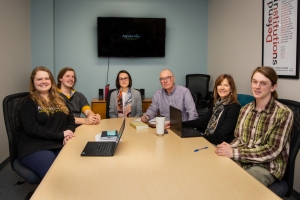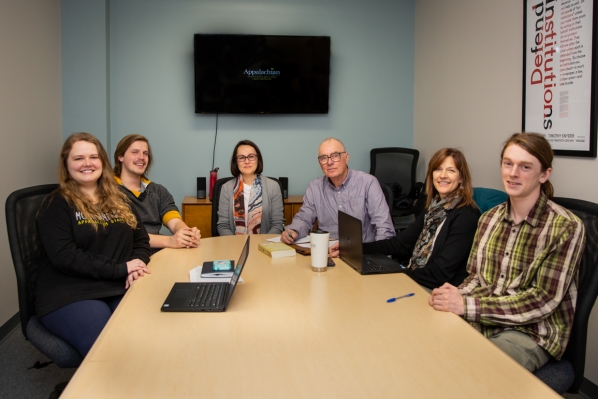The year 2017 was a threshold year for global emissions of carbon dioxide (CO2) to the atmosphere and for global climate change. Carbon dioxide is emitted when fossil fuels are burned and it is the principal gas responsible for global climate change. In 2017 emissions of CO2 to the atmosphere from fossil fuels and cement manufacture passed 10 billion metric tons of contained carbon for the first time, the concentration of CO2 in the atmosphere passed 400 parts per million and the increase in global average Earth surface temperature reached 1 degree celsius. In a January correspondence to the science journal NATURE Gregg Marland, Tom Oda and Tom Boden illustrate that population growth has been an important component in the growth of CO2 emissions and that gaining important reductions in CO2 emissions will require widespread global cooperation.
In order to understand changes in the atmosphere and to monitor efforts to reduce emissions it is important to keep track of emissions at all levels. But, the long-term, continuing data set on CO2 emissions, once managed by the Carbon Dioxide Information Analysis Center (CDIAC) at Oak Ridge National Laboratory in Tennessee, was discontinued in 2018. Appalachian State University’s College of Arts and Sciences is now partnering with the University’s Research Institute for Environment, Energy and Economics (RIEEE) and the Office of Research to assume support for a long term project that will provide continuing annual estimates of global and national emissions. The emissions data set will be maintained and given annual updates by Gregg Marland, a research faculty member with RIEEE and the Department of Geological and Environmental Sciences, and colleagues in the Appalachian Carbon Research Group.
CDIAC produced estimates of CO2 emissions from all countries dating from 1750 to 2014 and this reporting on CO2 estimates has been used in studies around the world to track increases in emissions and successes in decreasing emissions, but CDIAC was closed by the Department of Energy in March of 2018. With the belief that this extensive data set on CO2 emissions is important for tracking changes and solutions, Appalachian has committed to continuing the research in the form of annual updates to the data series. Global data on emissions through 2015 are already available on an Appalachian Energy Center website at https://energy.appstate.edu/CDIAC.
In a major report released last month, the Intergovernmental Panel on Climate Change (IPCC) was emphatic that as emissions, concentrations and temperatures all continue to rise, it is becoming more and more clear that a reduction in global emissions is necessary to avoid serious changes in the global climate system.
“Being able to continue to support the work of Dr. Gregg Marland and his colleagues is crucial. The annual report on global emissions trends offers governments, NGOs and the public key information needed to seek and monitor big solutions in slowing CO2 emissions. The college hopes to build on their work as well as with many others interested in climate change and resiliency,” said Neva J. Specht, Dean, College of Arts and Sciences.
Emission estimates made by CDIAC for all countries are based on energy data collected by the United Nations Statistics Office, industrial data from the U.S. Geological Survey and chemical analyses of global fuels. Satellite observations of nighttime lights, data on the distribution of population and data on large point sources of emissions such as power plants, can be used to analyze the spatial distribution of emissions. Marland points out that in attempting to reduce global emissions it is important to have information on the spatial distribution of emissions - where the emissions come from. Good data are important for evaluating efficient and equitable strategies for reducing global emissions.
Reducing CO2 emissions is a major challenge because fossil fuels are so integral to modern life styles. Fossil fuels provide heat and light in our homes, power for our transportation systems and energy for industry. Successes in confronting global climate change will rely on interdisciplinary understanding and for this reason, value can be achieved in bringing this large data project into the research environment of a major university. The Appalachian Carbon Research Group includes expertise in mathematics, political science, accounting, geography, geology, chemistry, physics, economics, sustainable development and other disciplines.
What is visible in this data research of the past, and scenarios of the future, is that in order to make important impacts on emission reduction, it will require widespread cooperation and commitment on a global level. And measures of challenges and successes will rely on good data.
--------------------------------------------------o--------------------------------------------------------------
Marland served for over 20 years at Oak Ridge National Laboratory before coming to Appalachian State University. He served on the Intergovernmental Panel on Climate Change (IPCC) where he was a lead author of “Guidelines for National Emissions Inventories” (2006), a lead author for the “Special Report on Carbon Capture and Storage,” a contributing author on “Radiative Forcing of Climate Change for the First Assessment Report” and a lead author on “Energy Primer for the Second Assessment Report.” He was a review editor for the recent U.S. Fourth National Climate Assessment.
###
About the Research Institute for Environment, Energy and Economics
Since 2008, Appalachian State University’s Research Institute for Environment, Energy and Economics (RIEEE) has fostered interdisciplinary research on the environment, energy and economics, especially the areas in which these subjects intersect. The institute serves as an umbrella organization for three centers: the Appalachian Energy Center, Center for Economic Research and Policy Analysis (CERPA) and the Southern Appalachian Environmental Research and Education Center (SAEREC). The work supported by RIEEE is integrated into Appalachian’s academic programs, used to facilitate discovery among K-12 students and teachers, and employed in the region’s economic development. Learn more at https://rieee.appstate.edu.
About the Department of Geological and Environmental Sciences
Located in Western North Carolina, Appalachian State University provides the perfect setting to study geological and environmental sciences. The Department of Geological and Environmental Sciences provides students with a solid foundation on which to prepare for graduate school or build successful careers as scientists, consultants and secondary education teachers. The department offers six degree options in geology and two degree options in environmental science. Learn more at https://earth.appstate.edu.
About the College of Arts and Sciences
The College of Arts and Sciences is home to 16 academic departments, one stand-alone academic program, two centers and one residential college. These units span the humanities and the social, mathematical and natural sciences. The College of Arts and Sciences aims to develop a distinctive identity built upon our university's strengths, traditions and unique location. The college’s values lie not only in service to the university and local community, but through inspiring, training, educating and sustaining the development of its students as global citizens. There are approximately 6,100 student majors in the college. As the college is also largely responsible for implementing Appalachian's general education curriculum, it is heavily involved in the education of all students at the university, including those pursuing majors in other colleges. Learn more at https://cas.appstate.edu.
Monday, Feb. 18, 2019
By Ellen Gwin Burnette
BOONE, N.C.

